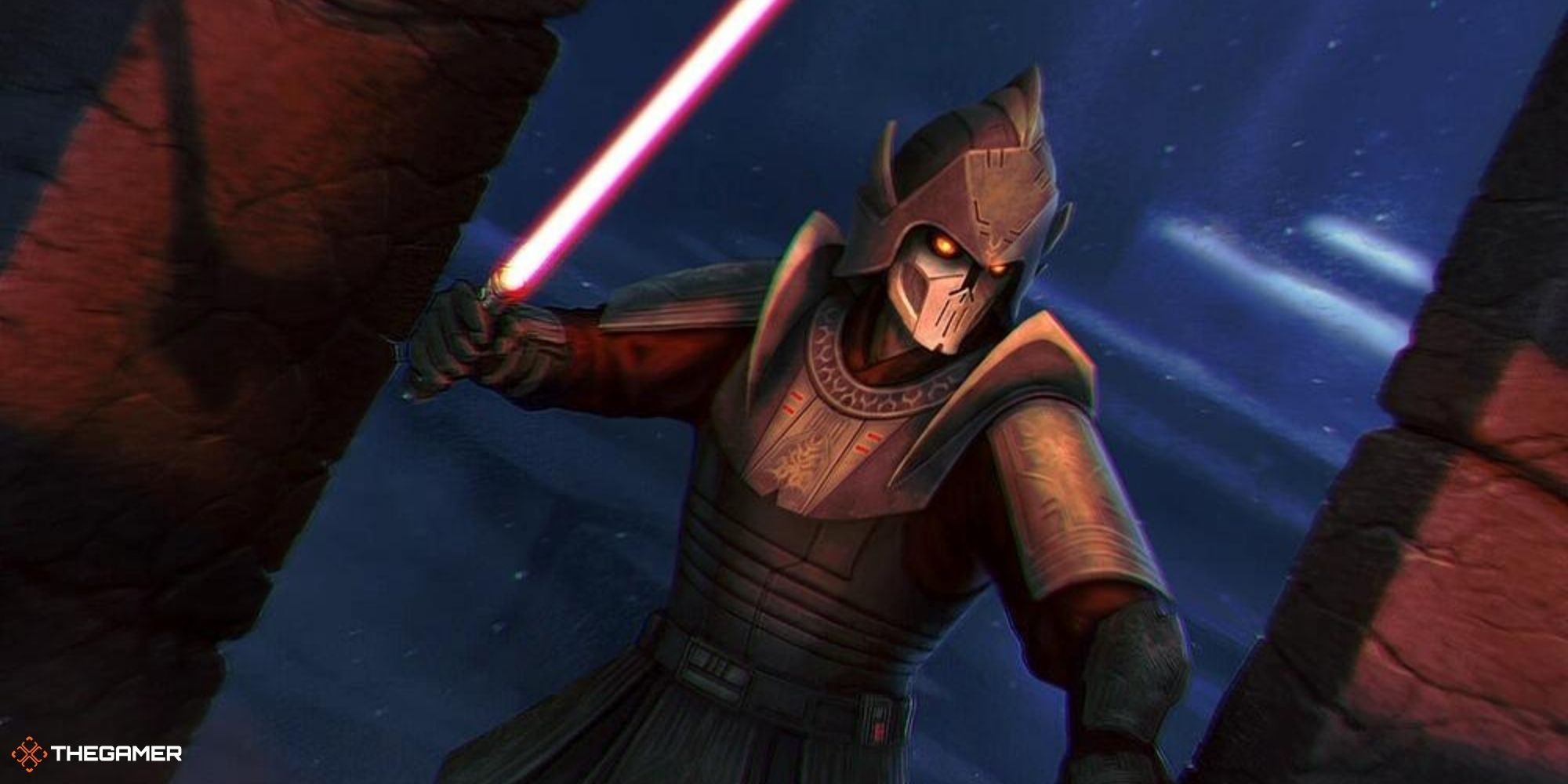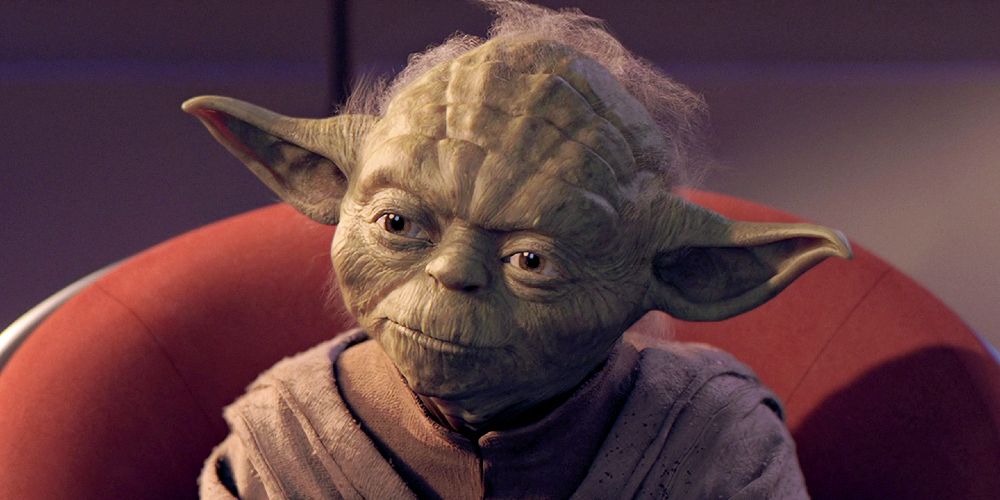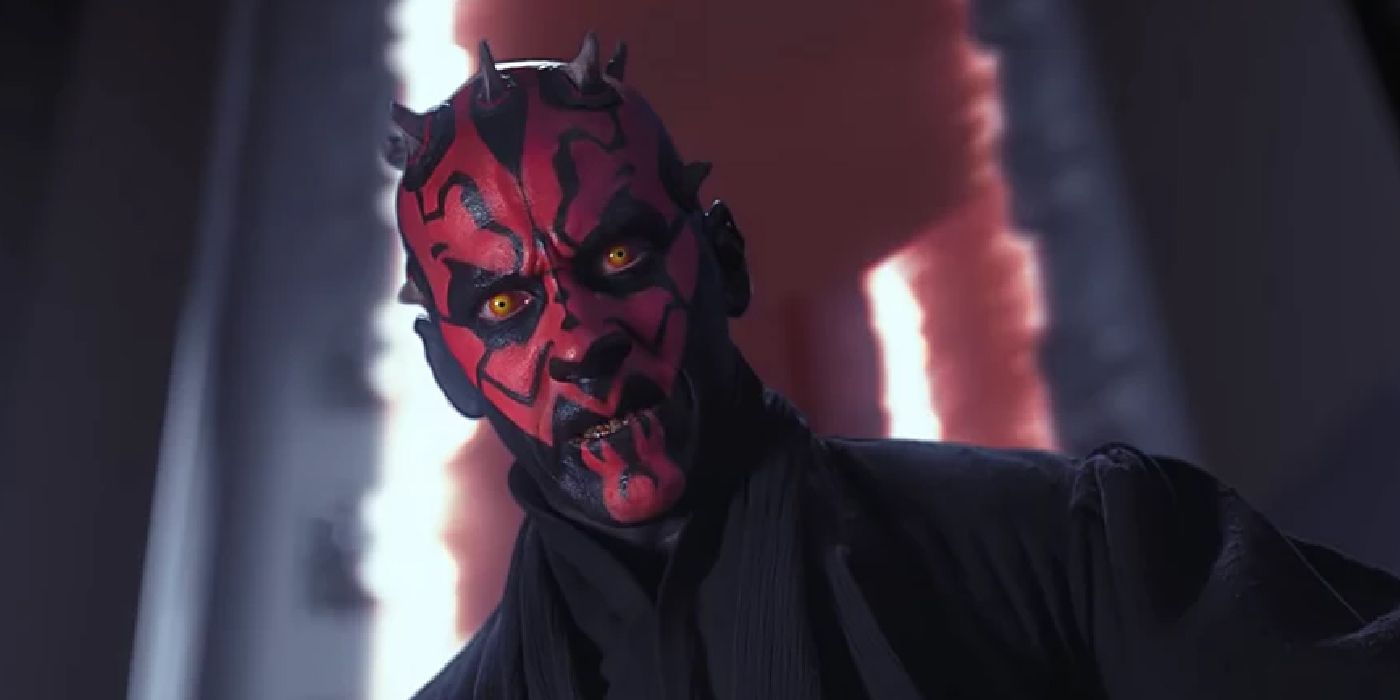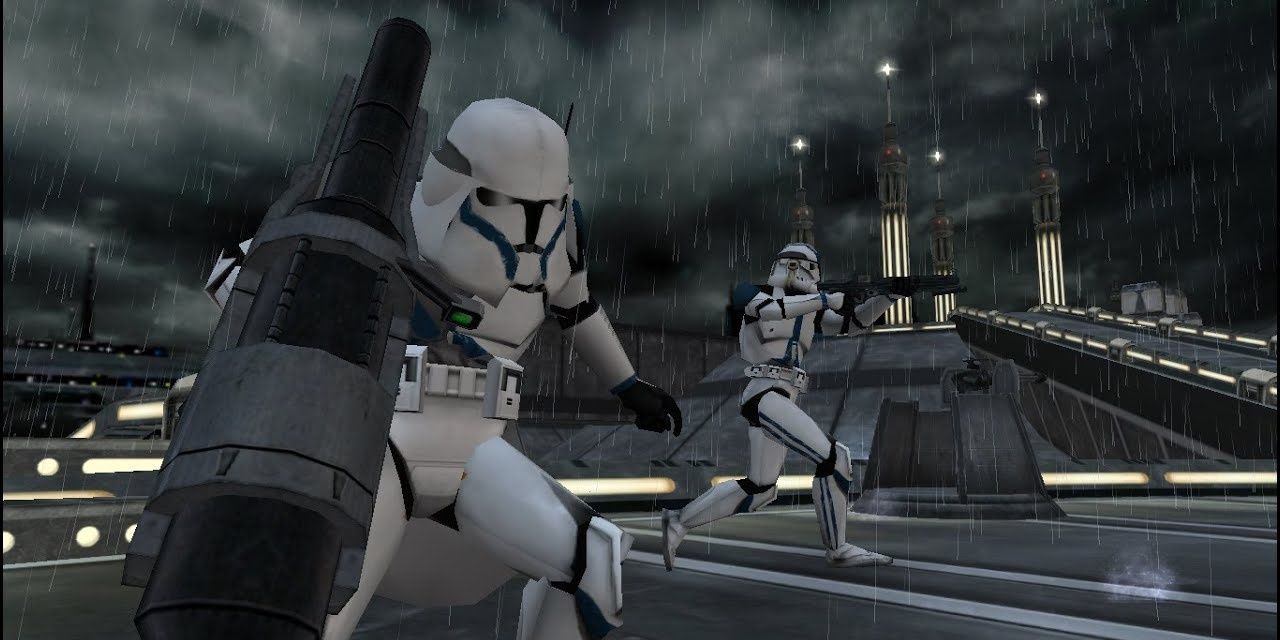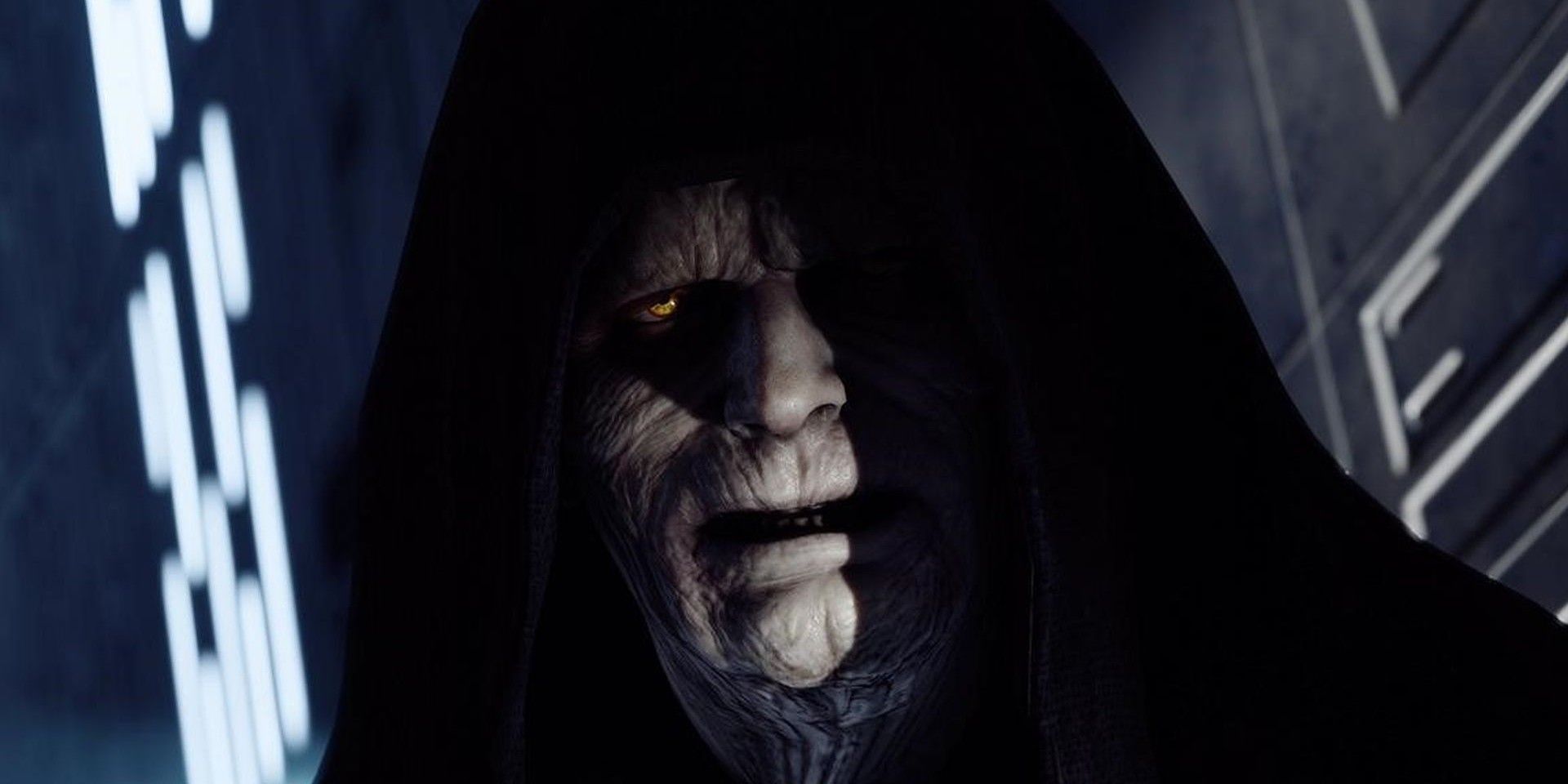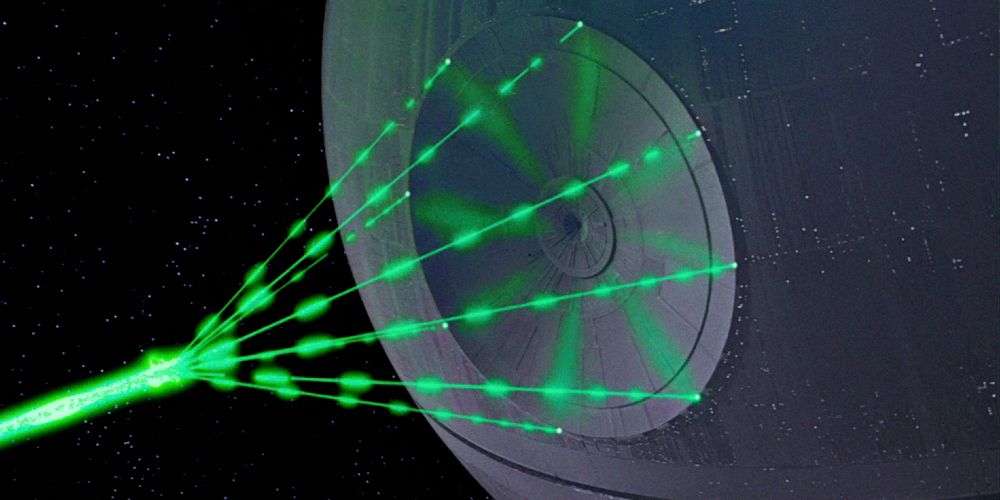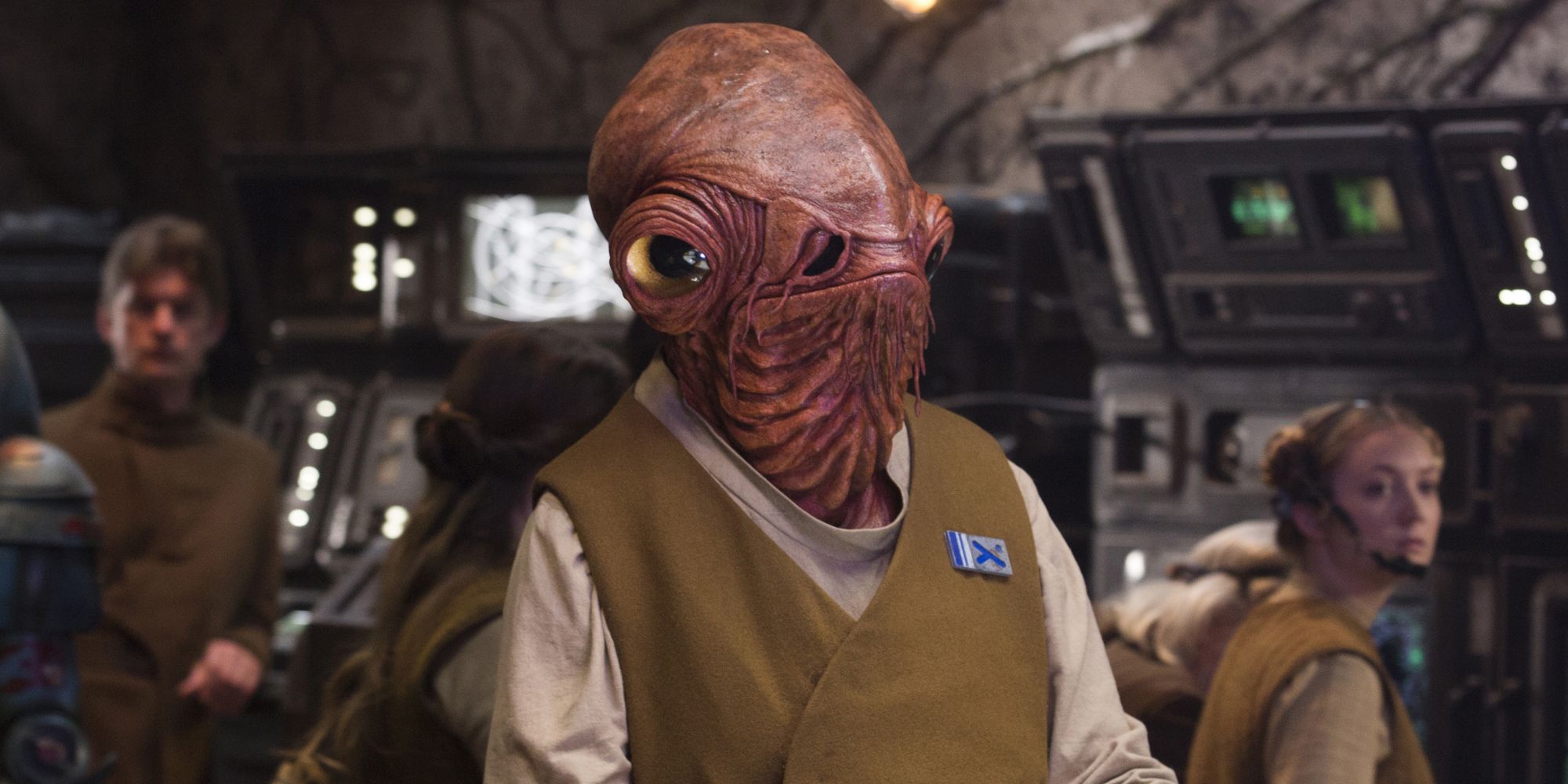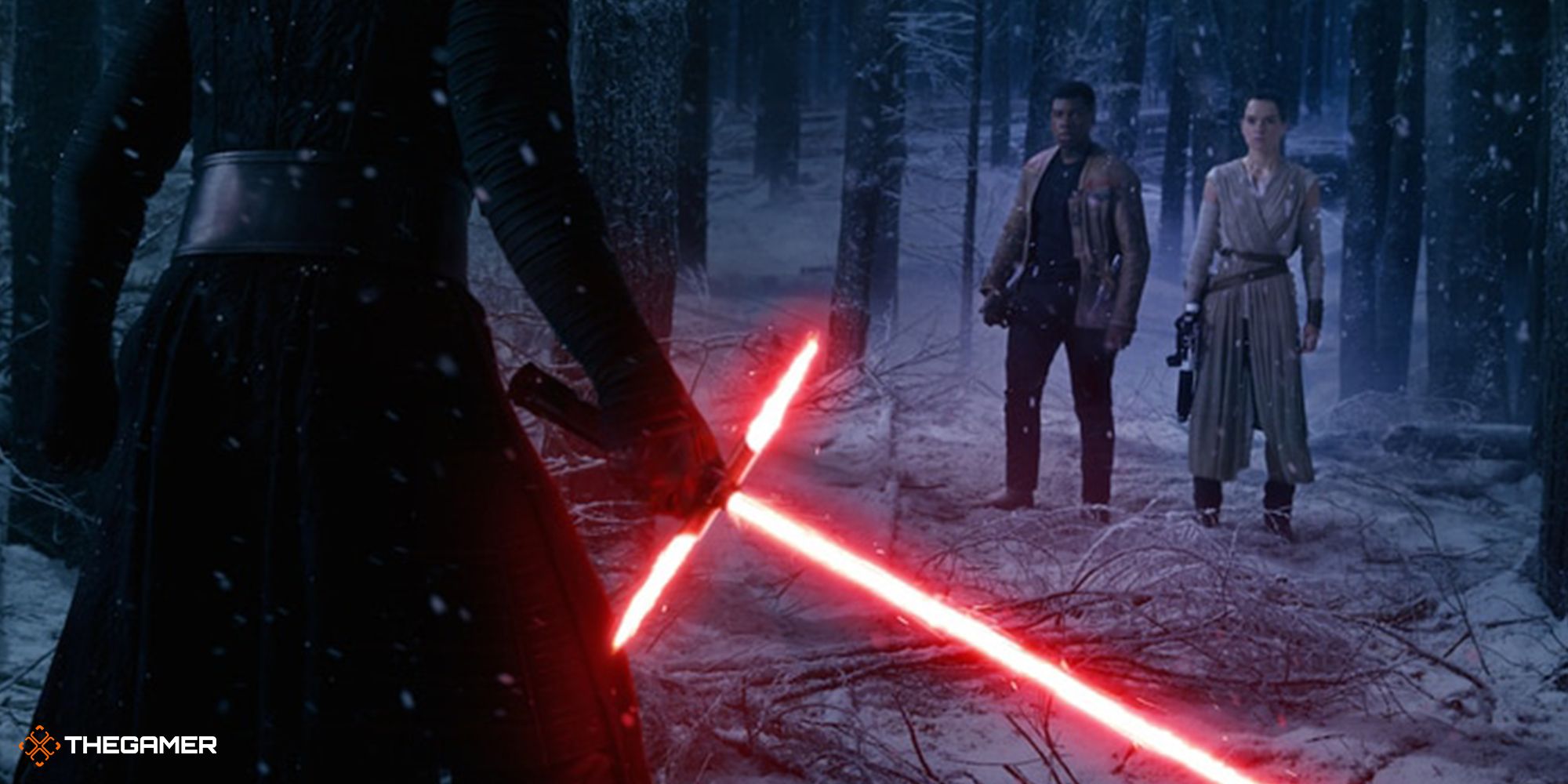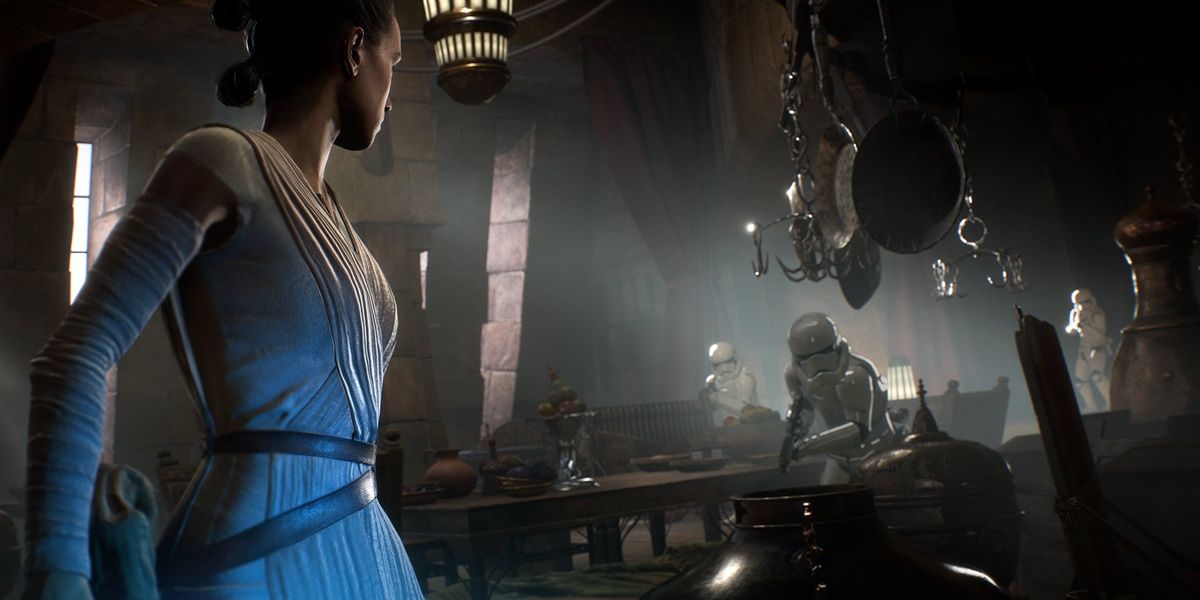Quick Links
- Canon Versus Legends
- The Old Republic (circa 25,000 BBY)
- Jedi And Sith (circa 5,000 BBY)
- The Dark Age (5,000 – 1,032 BBY)
- The Sith In Hiding (1,032 – 19 BBY)
- The High Republic (circa 300 – 82 BBY)
- The Invasion Of Naboo (32 BBY)
- The Clone Wars (24 – 19 BBY)
- The Galactic Empire Is Founded (19 BBY)
- The Death Star (2 BBY – 1 ABY)
- The Fall Of The Empire (5 ABY)
- The New Republic (5 ABY – 29 ABY)
- The First Order (29 ABY – 35 ABY)
- The Return And Defeat Of Darth Sidious (35 ABY)
Star Wars boasts one of the most expansive, detailed settings of any media franchise. With an entire galaxy's worth of planets, species, and civilizations, the possibilities are endless. Add a history that spans millennia before the events of the films, and you've got enough space to tell nearly any conceivable story.
Star Wars lore is so vast that it actually has two separate timelines. While the Legends timeline is filled with extraordinary characters and exciting adventures, only the events of the Canon timeline are currently official. Let's take a look at the Canon history of the Star Wars galaxy, from the foundation of the Republic to the victory over the First Order.
This article contains spoilers.
Canon Versus Legends
Star Wars has two timelines; the Legends timeline, formerly known as the Expanded Universe, and the Canon timeline. The Legends timeline comprises any events described or alluded to in media besides the main films, such as novels and comics, prior to Disney's acquisition of the franchise in 2014. The Canon timeline comprises any events described or alluded to in official Star Wars media, including the main films, after the acquisition. All events in this article have been referenced in Canon media; events whose only sources are Legends media have been omitted.
The dates in this timeline use the Battle of Yavin – the destruction of the first Death Star in A New Hope – as their "year zero." Their relation to that event is denoted by BBY (before the Battle of Yavin) and ABY (after the Battle of Yavin).
The Old Republic (circa 25,000 BBY)
Sentient civilization in the Star Wars galaxy stretches back tens of thousands of years. Before the Empire, the galaxy took its first steps toward unification with the formation of the Old Republic approximately twenty-five thousand years before the events of the films. Several Core Worlds, including the pacifist monarchy of Alderaan and the democratic republic of Chandrila, confederated into a single Galactic Republic and spent the next several millennia bringing like-minded societies into the fold.
At the time, hyperspace travel was limited as advanced astrogation techniques had not yet been developed, so the Republic was limited to the Core Worlds. The city-world of Coruscant, another founding member, charted hyperspace routes that made itself the center of trade and travel within the Core Worlds, eventually becoming the capital of the Republic and seat of the Senate.
Jedi And Sith (circa 5,000 BBY)
Approximately five thousand years before the formation of the Galactic Empire, a breakaway faction within the Jedi Order dedicated itself to the Dark Side of the Force. These Sith, as they came to be known, sought to use the Force to gain and keep temporal power. The conflicts that grew out of this schism were at first limited to the Jedi and the Sith, but as powerful Sith raised armies and formed empires of their own the bloodshed spilled out into the secular galaxy.
When the Republic world of Koros Major came under attack by the Sith Lord Naga Sadow, the planet's ruler Empress Teta appealed to the Jedi Order for help. This resulted in the Great Hyperspace War, which ended with the dismantling of the Sith Empire and a permanent alliance between the Republic and the Jedi. The Jedi would eventually move their headquarters to Coruscant and swore themselves to the service and defense of the Republic.
The Dark Age (5,000 – 1,032 BBY)
With the Sith threat temporarily gone, the Republic could focus on growth. Thanks to expanded hyperspace lanes charted by the Corellian royal family, the Republic was able to extend its influence further and further from the Core. As systems joined the Republic one by one, it became the dominant political force in the galaxy.
The first test of the Republic as a superpower came when the Senate outlawed slavery galaxy-wide. The Zygerrian Empire, whose economy was built on slave labor, defied the Senate and was dismantled by the Republic in the ensuing war.
During this time, the Republic would also come into conflict with the Mandalorians, a warlike people who sought to aggressively expand into Republic space. The strategic location of the Mandalorian Sector along key hyperspace lanes between the Core and the Outer Rim made the aggressors particularly dangerous to the continued growth and stability of the Republic.
As wars with Mandalore raged on, the Sith took the opportunity to attack the Republic with renewed strength. Using massive fleets built in secret at the planet Exegol, the returning Sith Empire conquered vast swathes of Republic space, including Coruscant. During this Dark Age, it seemed likely that the Republic would fall.
Luckily, the same ambition and greed that drove the Sith turned out to be their undoing. Infighting between the Sith Lords led to weaknesses that the Republic and Jedi could exploit, and slowly but surely the tide was turned. The Sith were finally defeated at the Battle of Ruusan in 1,032 BBY, and the Republic's government underwent a series of reforms as it re-established itself in the galaxy. The Galactic Republic would preside over a period of peace lasting a millennium.
The Sith In Hiding (1,032 – 19 BBY)
Despite their total defeat at Ruusan, a few Sith managed to escape after the battle. One of these survivors, Darth Bane, recognized that power struggles within the Sith Empire had been responsible for its downfall. He charted a new course for the adherents to the Dark Side; first, he hunted down and killed all the other surviving Sith.
As the sole remaining Sith Lord, Darth Bane took an apprentice, Darth Zannah, and instituted the Rule of Two. From that time on, there would only ever be two Sith in the galaxy – one master and one apprentice. This, he reasoned, would limit the damage that could be done by treachery within the order; if the apprentice betrayed and killed the master, they would simply take over as master and continue the cycle with their own apprentice. As it happened, nearly every Sith master over the next thousand years, including Bane himself, would be killed by their apprentices.
Bane's plan was for the Sith to operate in secret, taking as long as necessary to weaken the Republic and the Jedi until their hated foes could be destroyed for good.
The High Republic (circa 300 – 82 BBY)
The last few centuries of the Republic were considered its golden age. Investment in housing and public works allowed the improved quality of life for an unprecedented number of galactic citizens, and there were few major conflicts during this period.
The Outer Rim, long considered an untamed frontier, became a haven for those seeking to live outside galactic law. Criminal cartels like those of the Hutt Clan, and later large companies like the Trade Federation, would conduct most of their illegal practices there to avoid notice.
The High Republic era also saw notable advances in technology. Hyperspace travel became safer than it had ever been, and the development of bacta tanks led to major breakthroughs in medicine. Despite these advances, the period eventually gave way to a century-long decline as corruption and favoritism began to take root in the Senate.
The Invasion Of Naboo (32 BBY)
Sometime in the first-century BBY, the Sith Lord Darth Plagueis took Sheev Palpatine, a young nobleman from Naboo, as his apprentice. The two sought to use the Dark Side of the Force to manipulate life and death, allowing themselves to become immortal and create life from midi-chlorians. Meanwhile, Palpatine – who had taken the Sith name Darth Sidious – used his charisma and family connections to get himself elected to the Galactic Senate.
Once Sidious believed he had learned all he could from Plagueis, the Sith apprentice murdered his master and took an apprentice of his own, Darth Maul. He also courted the loyalty of Count Dooku, a Jedi Knight who was growing disillusioned with the Republic.
Through threats, blackmail, and bribery, Darth Sidious sowed the seeds of chaos throughout the Republic while maintaining his public image as dedicated civil servant Sheev Palpatine. He cajoled the Trade Federation, a near-monopolistic corporation, into invading Naboo, driving the planet's monarch Queen Padme Amidala to flee to Coruscant.
At the Republic's capital, Palpatine, as the Senator for Naboo, met with Amidala and told her that the Senate under its current leadership would never dare to go against the Trade Federation. In a speech before the Senate, Amidala motioned for a vote of no confidence in the ruling Supreme Chancellor, Finis Valorum. The vote passed, and Palpatine was elected Supreme Chancellor in Valorum's place.
Sidious' manufactured crisis cost him his apprentice, as Darth Maul was killed in the ensuing Battle of Naboo, but the Sith Lord was able to quickly replace the warrior with Count Dooku, who turned to the Dark Side and took the name Darth Tyranus. He also took note of an unexpected hero of the battle, a Force-sensitive child named Anakin Skywalker who had successfully piloted a starfighter with distinction despite his young age. When the youth was accepted into the Jedi Order shortly thereafter, Palpatine took care to follow Skywalker's growth and lavish praise on the boy.
The Clone Wars (24 – 19 BBY)
Eight years after the Battle of Naboo, thousands of systems declared their intent to secede from the Republic, citing rampant self-dealing within the Senate. The effort was funded by several large corporations, including the Trade Federation, who hoped for more favorable laws under the new Confederacy of Independent Systems. Count Dooku, a longtime voice for reform, was made leader of the Confederacy and ruled from the planet Serenno.
The ruling Separatist Senate hoped to avoid war with the Republic and sought a peaceful separation. As a means of deterrence, they commissioned a massive army of battle droids from the Trade Federation. The Droid Army was the largest fighting force the galaxy had ever seen by that time, one with which the Republic would not be able to compete if war broke out.
Amidala, now a Republic Senator occupying Palpatine's former seat as well as Queen of Naboo, was forced into hiding as the Trade Federation had put a price on her head. She authorized her fellow representative from Naboo, the Gungan Jar Jar Binks, to speak and vote on her behalf during that time. Binks, overly trusting by nature, was convinced to put forth a motion granting emergency dictatorial powers to Supreme Chancellor Palpatine. With the impending crisis and the weight of Naboo's votes in the Senate, the motion passed.
Palpatine immediately nationalized a mass cloning project that he had already been funding through back channels. He ordered the creation of the Grand Army of the Republic, consisting of fast-growing clones of the galaxy's most feared bounty hunter at the time, a Mandalorian named Jango Fett. The clones were all fitted with inhibitor chips to ensure their obedience, including a subliminal code-phrase that Palpatine could use at a later time.
When Amidala and her bodyguards, Anakin Skywalker and his mentor Obi-Wan Kenobi, were captured by the Separatists on Geonosis, the Jedi Order led the Grand Army of the Republic on a rescue mission. This attack triggered the Clone Wars, the largest armed conflict in galactic history.
During the Clone Wars, the Jedi stepped into battlefield command roles in service to the Republic. Darth Tyranus, as leader of the Confederacy, violated the Rule of Two by taking Asajj Ventress and Quinlan Vos as apprentices over the course of the conflict. He also trained the Confederacy's Supreme Martial Commander, a cyborg named Grievous, in lightsaber combat.
The Clone Wars lasted for five years, ending with a failed Separatist assault on Coruscant. After the Separatists made planetfall, Palpatine allowed himself to be captured by Dooku and Grievous. While Obi-Wan Kenobi led Republic forces in battle on the ground, Anakin Skywalker staged a rescue of the Supreme Chancellor. Skywalker defeated Dooku in lightsaber combat and, on Palpatine's orders, executed the enemy leader on the spot.
The Galactic Empire Is Founded (19 BBY)
In recognition of Skywalker's service to the Republic, Palpatine named the young knight his personal representative to the Jedi Council. The Supreme Chancellor cultivated Skywalker's loyalty, ultimately revealing his true identity as the Dark Lord of the Sith. Darth Sidious promised Skywalker a means of preventing the future death of Queen Amidala, whom the young Jedi had secretly married in violation of his oath of celibacy.
Anakin Skywalker informed the Jedi Master Mace Windu of Palpatine's identity, and Windu went with a group of Jedi to arrest the Supreme Chancellor. Sidious killed Windu's companions but was disfigured when the Jedi Master deflected his own Force lightning back at him. When Skywalker arrived on the scene to find the two combatants in a stalemate, Palpatine convinced him that the Jedi were planning a coup against the Republic. Skywalker attacked Windu, giving the Sith Lord an opening to kill the Jedi Master. Darth Sidious then officially took Anakin Skywalker as his apprentice, renaming him Darth Vader.
On Sidious' orders, Vader first massacred the inhabitants of the Jedi Temple on Coruscant, including children, and then set out for the planet Mustafar to eliminate the remaining Separatist leaders. For his part, Palpatine went before the Senate and used the attack on his home as pretext to declare the Jedi Order traitors to the Republic. Using the chips installed in the clone troopers, Palpatine issued Order 66, overriding any existing loyalty and forcing the clones to kill any and all Jedi they encountered. Finally, Palpatine dissolved the Republic and declared himself Emperor, forming the Galactic Empire.
A final attempt by the surviving Jedi to eliminate Sidious failed – Grand Master Yoda was forced to flee following a duel with Sidious in the Senate hall, and Obi-Wan Kenobi defeated but did not kill Darth Vader on Mustafar. The maimed Vader was retrieved by clone troopers and cybernetically reconstructed under Sidious' personal supervision.
The Death Star (2 BBY – 1 ABY)
After seizing power, Emperor Palpatine largely left the business of governing to Grand Vizier Mas Amedda and his military commanders so that he could renew his efforts to become immortal. Following the death of Queen Amidala during his mission to Mustafar, Darth Vader proved fanatically loyal to the new Empire. He spent much of his time silencing pockets of resistance that cropped up throughout the galaxy.
After fifteen years of fascist rule under the Empire, the disparate rebel factions began to establish communications with one another and unify. Mon Mothma, a Chandrilan Senator who had served on both the Republic and Imperial Senates, formally proclaimed the Rebel Alliance in 2 BBY, giving the resistance a flag to rally behind.
Grand Moff Wilhuff Tarkin, the Imperial governor of the Outer Rim, oversaw the construction of a superweapon called the Death Star. Capable of destroying entire planets in a single shot, the Death Star was meant to force the rebels into submission. Tarkin used the Death Star to destroy one of the Republic's original founding worlds, Alderaan, as a show of force before allowing rebel prisoners to escape custody and tracking their ship back to their headquarters at Yavin Four.
In orbit over Yavin, rebel starfighters scrambled in a counterattack. The plans to the Death Star, stolen in a suicide mission by the covert operations squad Rogue One, had been recovered by Princess Leia of Alderaan and revealed a critical weakness in the station's design. The Death Star was destroyed by a proton torpedo fired by X-Wing callsign Red Five, who was nearly shot down by Darth Vader himself.
As fate would have it, Red Five was none other than Luke Skywalker, Vader's long-lost son by Amidala. Amidala had given birth to twins shortly after the foundation of the Empire, unknown to Vader. When Amidala died in childbirth, Luke was taken to his father's homeworld of Tatooine, and Leia was adopted by Bail Organa, the ruler of Alderaan.
The Fall Of The Empire (5 ABY)
The destruction of the Death Star was a massive blow against the Empire, and the Imperial military set about a ruthless campaign to eliminate the Rebel Alliance. Vader, who had sensed Luke Skywalker's Force potential, brought the matter before Darth Sidious. The Emperor confirmed that Luke was in fact Vader's son, and the two put forth a plan to convert the youth to the Dark Side. Both Vader and Sidious hoped to turn Skywalker against the other, making room for a powerful new apprentice under the Rule of Two.
Vader's first attempt to convert Luke in the Bespin system failed, and on learning the truth of his heritage, Skywalker resolved to bring his father back to the Light Side of the Force if possible. Meanwhile, as the Galactic Civil War continued, construction began on the DS-2, an improved Death Star.
Palpatine leaked the location of the DS-2 construction site to the Rebels, and as expected they mounted a full-scale assault commanded by Admiral Ackbar. Just before the battle, Luke Skywalker boarded the Death Star and surrendered himself to be brought before the Emperor. Darth Sidious and Darth Vader made a joint effort to convert Luke to the Dark Side, using the DS-2 superlaser to destroy a rebel cruiser to prove to him that they could kill all of his friends then and there if they wanted to.
As the battle raged outside the station, Luke continued to refuse the Sith entreaties, dueling Vader once more and winning. Unable to break the young Jedi's will, Palpatine tortured Skywalker with Force lightning. This proved to be too much for the dying Vader to bear, and he renounced the Dark Side before throwing the Emperor to his death down a reactor shaft.
The Skywalkers escaped the Death Star before Rebel Forces managed to destroy it, and Luke cremated Vader's body on the surface of Endor. With the deaths of the Sith Lords, the Empire quickly began to collapse. Emperor Palpatine had left orders for sweeping purges of information and planets in the event of his death, and his most loyal officers carried those orders out in the following months. Meanwhile, power struggles between the surviving Imperial elite and failed propaganda attempts to suppress news of the Alliance victory led to further fractures in the Empire.
The New Republic (5 ABY – 29 ABY)
At the same time they were continuing the war against Imperial holdouts, the Rebel Alliance set about forming a new government. The New Republic was promulgated the year after the victory at Endor, when the last vestiges of the Imperial military offered their former surrender after the Battle of Jakku. Mas Amedda met with Mon Mothma on Chandrila to sign the Galactic Concordance. Amnesty was offered to any Imperial officers who willingly surrendered and the Imperial government was dismantled.
The New Republic was not based on Coruscant as its predecessors had been – instead, each Galactic Senate would elect a host world, preventing power from being centralized in one place. Additionally, the New Republic instituted a policy of demilitarization, hoping to reverse the damage done since the Clone Wars.
The First Order (29 ABY – 35 ABY)
Those who had enjoyed power under the Empire chafed at the return of democracy to the galaxy. Over the next several decades, fascists, Imperial revanchists, and anti-disarmament hawks formed a totalitarian movement called the First Order. Seeking a return to what they considered a position of strength under the Empire, the First Order set out on a campaign to indoctrinate youth and sow discontent with the New Republic.
The First Order courted the Centrist party in the Senate, a faction that advocated for more centralized power in the New Republic. The Centrists had put forth a resolution to create the title of First Senator, putting greater executive privileges in the hands of a single person. Senator Leia Organa, a leader of the Populist party, was against the idea. To discredit Organa, Centrist Senator Ransolm Casterfo publicly revealed that his opponent was the daughter of Darth Vader, an accusation she was forced to admit was true. Worse still for Organa, her own son Ben Solo had abandoned his Jedi training under Luke Skywalker the previous year to join the First Order.
The stunt led to an increase in Centrist votes in the Senate, and Centrist worlds voted en masse to leave the Republic and join the First Order in the interest of galactic security. Leia Organa tendered her resignation as a Senator and started the Resistance, a paramilitary group dedicated to stopping the First Order.
The First Order grew increasingly belligerent, ultimately using a new superweapon at Starkiller Base to destroy the New Republic's current capital at Hosnian Prime in 34 ABY. In the following years, the First Order spread throughout the galaxy virtually unopposed, as Leia's Resistance was not powerful enough to stop them.
The Return And Defeat Of Darth Sidious (35 ABY)
As the war between the Resistance and the First Order progressed, Darth Sidious' final contingency was coming to fruition on Exegol, the planet where the fleets of the original Sith Empire had been built. Through a combination of cloning technology and the research he had conducted decades before alongside Darth Plagueis, the Dark Lord of the Sith was resurrected by a cadre of dedicated cultists.
Acting through his proxy, Supreme Leader Snoke, Sidious had formed the First Order and lured Ben Solo (now called Kylo Ren) to the Dark Side. Kylo Ren, plotting to supplant both Snoke and Sidious and become Galactic Emperor himself, forged an alliance of convenience with Luke Skywalker's final pupil, Rey, to travel to Exegol and destroy the resurrected Palpatine.
Palpatine's intention was to convince Rey to strike him down in anger. Secretly his granddaughter, she would have made a perfect youthful vessel for his spirit to inhabit, but the Sith ritual that would allow him to take over her body required that she turn to the Dark Side and destroy him. Rey was saved by the intervention of Kylo Ren, who was subsequently killed by Palpatine.
Rey and Darth Sidious, the last Jedi and the last Sith, were imbued with the power of all the previous Force-users from their respective sides. Rey reflected Sidious' Force lightning attacks as Mace Windu had done in the final days of the Republic, and her power was enough to destroy him for good. The First Order's chain of command quickly deteriorated following the deaths of Snoke, Kylo Ren, and Palpatine in rapid succession, and newly-rallied Resistance forces were able to defeat the First Order over the following months.
Rey, meanwhile, symbolically ended the era of the Jedi by burying her lightsaber, which had been previously wielded by both Anakin and Luke Skywalker, on the pair's homeworld of Tatooine.
Source: Read Full Article
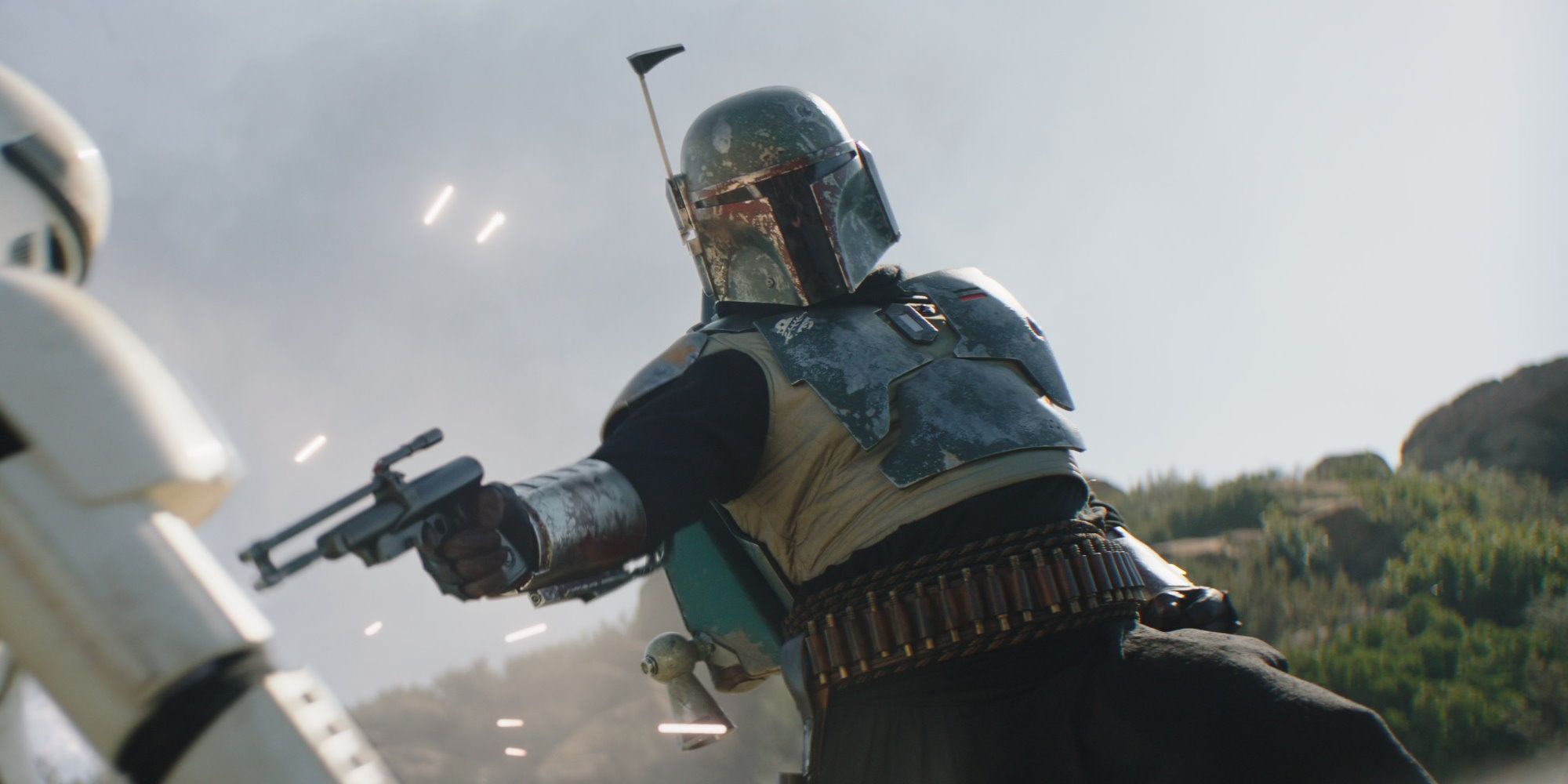
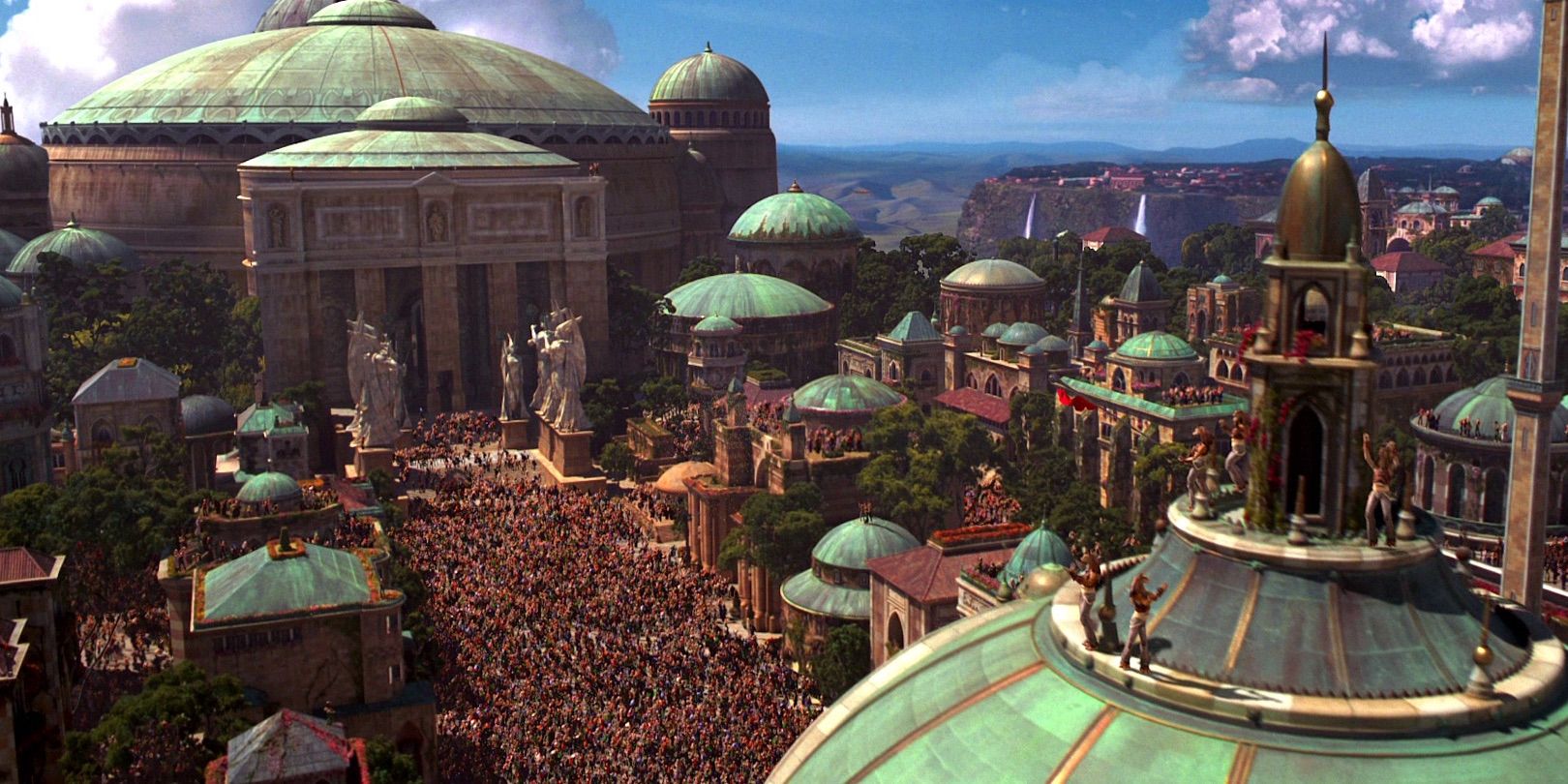
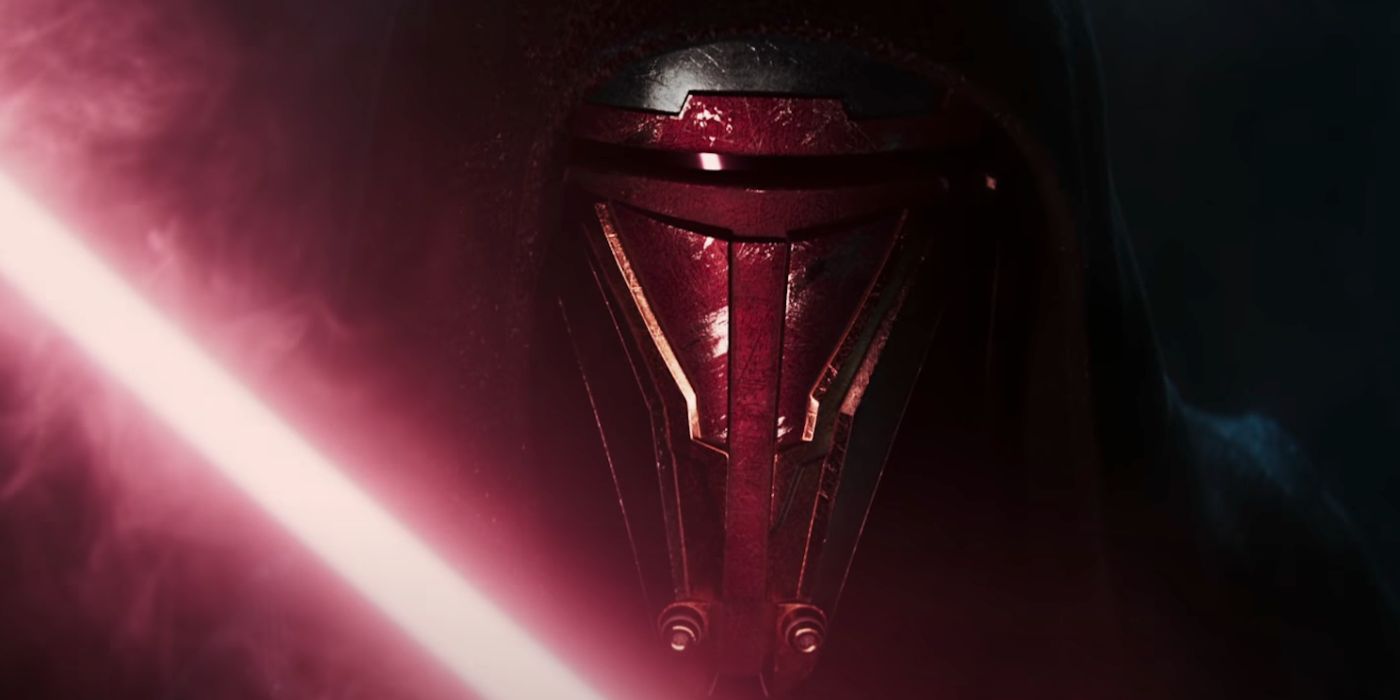
.jpg)
